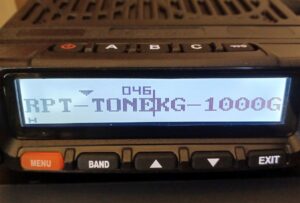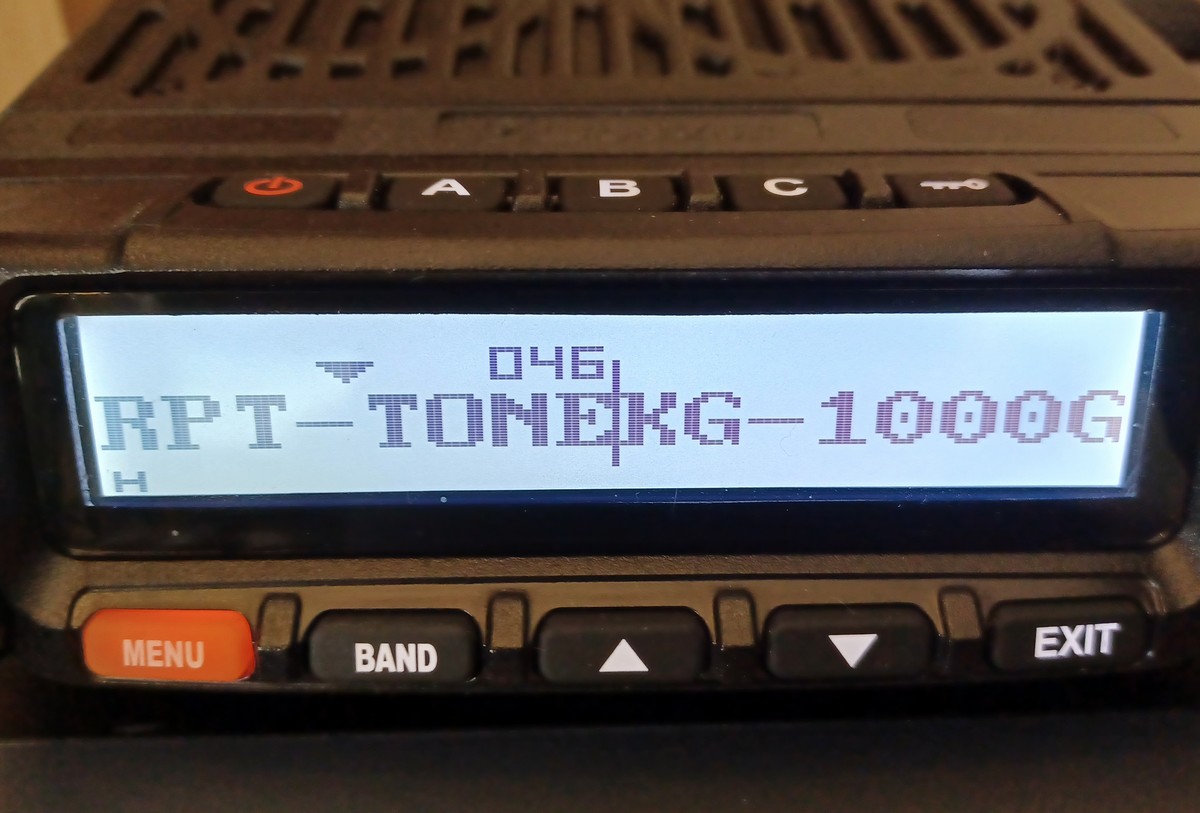
 Many of the Wouxun branded radios we carry at Buy Two Way Radios include a feature called RPT-TONE. This function is somewhat of a mystery to many, because when activated, it doesn't seem to actually do anything, or at least anything immediately noticeable to the average operator. What is RPT-TONE, and what, if anything, does it do?
Many of the Wouxun branded radios we carry at Buy Two Way Radios include a feature called RPT-TONE. This function is somewhat of a mystery to many, because when activated, it doesn't seem to actually do anything, or at least anything immediately noticeable to the average operator. What is RPT-TONE, and what, if anything, does it do?
RPT-TONE is often found on many commercial (business) and amateur radios, but under different names. It is most commonly referred to as Squelch Tail Elimination, or STE. Motorola calls their iteration of it reverse burst. In simple terms, the feature mutes or eliminates the squelch burst often heard at the end of a transmission as the PTT is released. This noise is quite brief, usually less than a second in duration, but can become quite annoying when chatting back and forth on calls.
There are a few common methods for eliminating squelch burst, and each depends on what the manufacturer adopts as their standard. Baofeng and Wouxun send a specific PL tone for about 500 milliseconds or so at the end of the transmission. Some other manufacturers allow the user to adjust the tone somewhat in the programming software. Motorola uses the reverse burst method, which reverses the phase of the tone at the end of the transmission, in effect "cancelling out" the squelch. No matter which method is used, the result is the same. The squelch burst is, audibly at least, eliminated.
To activate squelch tail elimination on Wouxun radios, locate RPT-TONE in the menu, choose OFF, and save the setting. The radios that receive a transmision from this unit should not hear a squelch tail. To transmit the squelch tail, turn RPT-TONE ON. This feature can also be activated and deactivated in the Wouxun programming software for each model.
Here is a list of Wouxun radios featuring RPT-TONE and its location in the menu for each model.
| Model | Type | Menu # | Options | Default |
|---|---|---|---|---|
| KG-1000G | GMRS | 46 | ON/OFF | ON |
| KG-UV8D | Amateur | 47 | ON/OFF | OFF |
| KG-UV8D-PLUS | Amateur | 47 | ON/OFF | OFF |
| KG-UV8E | Amateur | 47 | ON/OFF | OFF |
| KG-UV8H | Amateur | 47 | ON/OFF | OFF |
| KG-UV9P | Amateur | 47 | ON/OFF | OFF |
| KG-UV920P-A | Amateur | 41 | ON/OFF | ON |
| KG-UV980P | Amateur | 46 | ON/OFF | ON |












Update to my previous comment. I found a solution for my situation. As previously described, my KG-UV980p appears to use an uncommon 62.5Hz suppression tone as the "RPT-TONE" when using CTCSS, rather than the more common (I'm still not going to use the word "standard) 55Hz. However, for DCS, they emit the much more standard 134.4Hz tone (sine wave). All of my HTs respond correctly to that.
I'm using my 980p as a cross-band repeater, and I was having trouble on my side of that, so this is a fine solution for me. I can set both the 980p and my HTs to whatever I want.
This technique does work fine on simplex. I've tested it on multiple radios in simplex mode. I think the trouble with the Wouxun radios is that mine (a KG-UV980p) appears to use 62.5 Hz as the tone, rather than the more common 55 Hz. Most of my other radios (various brands) use 55 Hz, and they can eliminate the squelch tail for each other just fine. But the Wouxun does not seem to interoperate with them.
For the curious, my methodology is to key up for a few seconds and then release, all while listening on other radios AND recording in an SDR without a high-pass filter. This preserves the sub-audible tone, which I can analyze. I can very clearly see the PL tone, the PTT-release moment, and the switch to the RPT-TONE tone at the end. I don't see a way to set the RPT-TONE frequency in any of these radios, so I suspect I'm just out of luck.
This function can't work on a simplex frequency. The receiver needs to know when the transmit signal disappears. In order to get this to work one would have to have an audio delay. When the receive signal disappears, the receiver needs to have a few milliseconds to close the audio path. In other words the receive audio must be muted (delayed) before the receive carrier dropped. Of course the transmit carrier can stay active, as long as the receiver mutes before the receive carrier disappears. Essentially it has an Audio delay, so the receiver end can mute before the squelch tail. The radio could use a PL tone as indicator. When the PL tone (into the receiver) goes off, audio is delayed a few milliseconds so that the audio path can be muted.
Really not much of a difference for sure
Having experimented with these settings using the KG-1000G and KG-UV9P Radio, the setting does not appear to make any discernible difference on the receive end of the transmission.
Receivers include a KG-1000G, KL-UV9P, and Yaesu FT991A.
In my test cases I have set both models to transmit a PL of 67.0Hz and each receiver to require a PL of 67.0. As I change the settings referenced from on to off, the only thing I observe is that there is a slight delay (perhaps 1/2 second) between when the PTT button is released and when the squelch crash is heard on the receiver. Aside from that, no difference. I my eyes were closed and did not know exactly when the PTT was released I would know no difference. I wonder if this feature is really just a carry over from days gone by when repeaters used physical reed resonators and doing the phase reversal was a means to “brake” the resonance to get the repeater to stop re-transmitting more quickly.